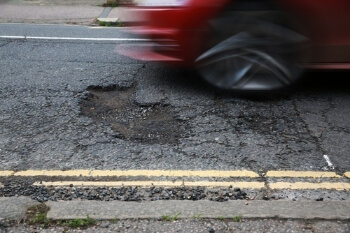
UK councils are facing rising pothole claims and mounting repair costs. From evidencing inspections to adopting AI-powered road monitoring, local authorities must balance statutory duties, financial risk, and public safety in managing deteriorating highways, argues Georgia Milton, a paralegal at DWF and a member of the Forum of Insurance Lawyers.
The deteriorating road infrastructure in the UK has become a legal battleground, with local authorities facing a surge in pothole-related personal injury and vehicle damage claims. As councils tackle issues such as budgetary constraints and mounting repair backlogs, the question emerges: when does legal responsibility arise?
The Highways Act 1980
Under Section 41 of the Highways Act 1980, highway authorities have a statutory duty to maintain their public roads. If a pothole causes injury/damage and the claimant can prove the defect was dangerous and directly caused the injury/damage, the council may be held financially liable. The burden of proof rests with the claimant and they must evidence, on the balance of probabilities, that there was a dangerous defect which caused the damage they complained of.
However, there is a defence available to the council under section 58. To establish such a defence, the council must show they took all reasonable steps to ensure the relevant section of the road was not hazardous for road users. This would include a system of inspections, repairs, and action taken following any reports of defects. As the duty under section 41 is non-delegable, it is important to clearly evidence highways policies and instructions to any contractors.
Whilst the legal framework provides councils with a defence where they have acted reasonably, it is important to note the burden of proof then shifts to the council and they must evidence that defence.
A range of documents are required to support a Section 58 defence:
- Highways policies
- Instructions to contractors
- Inspection records and maintenance schedules
- Reports of defects and response times.
- Photographic evidence and repair documentation.
Broadly speaking, councils are not typically liable if the Claimant fails to evidence a dangerous defect or if the following can be evidenced:
- A consistent and reasonable inspection system
- A reactive repairs system/adherence to work priorities and categories
- The defect was not present or dangerous at the inspection prior to the accident
A recent case suggests scrutinising the claimant's evidence is just as important as ensuring accurate documents in support of a defence as above. In Nash v Hertfordshire County Council [2020] EWHC 3247, the Claimant's case failed because they could not prove the presence of a dangerous defect. The methods used to record the defect (a hand for reference and a photograph from a mobile telephone) were inaccurate and unreliable. The lack of contemporaneous evidence in relation to the pothole undermined the credibility of the claim and it was dismissed.
Financial Implications and Risk Mitigation
Frustratingly, even where councils have fulfilled their statutory duty, defending claims incurs legal costs. To mitigate financial exposure:
- Councils may seek indemnities from contractors if repairs were outsourced and found to be inadequate.
- Councils can consider the pursuit of third-parties. For example, in respect of delayed or incompetent action by utilities which contributed to the road’s dangerous condition.
- Councils should consider economic settlements vs the serial claimant.
If there is a risk that settling a small claim could mean more claims would follow, this is not always the best way forward. However, economics should always be factored into decision making.
- A wider way of reducing the risks posed by potholes could include considering different materials for surfaces/repairs, raising public awareness in relation to pothole reporting and ensuring collaboration with utilities so that when they conduct works, roads are safely put back together.
The Role of AI in Prevention
As claims rise, councils are turning to technology as an aide in risk mitigation. The Local Government Association (LGA) has endorsed the use of artificial intelligence (AI) and scanning technologies to detect early signs of road defects. AI-powered systems can prioritise repairs, ensure maintenance schedules are efficient and reduce reliance on reactive fixes.
By identifying potholes before they become hazardous, councils can improve road safety and also, hopefully, reduce the likelihood of claims. Several local authorities have piloted the use of AI to conduct highways inspections to great success. Whilst human oversight remains essential, times are quickly evolving and it is inevitable that AI will play a significant role in future years.
Looking Ahead
As claims become more sophisticated and public scrutiny intensifies, councils must invest in robust inspection regimes and embrace technological innovation.
AI may not eliminate potholes, but it could significantly reduce the legal and financial fallout. In the meantime, councils must continue to document their maintenance and repair efforts rigorously to ensure a strong defence against claims.
Ultimately, councils are familiar with their roads and, with confidence in their internal procedures and record-keeping, should continue to defend pothole claims in the right circumstances.













